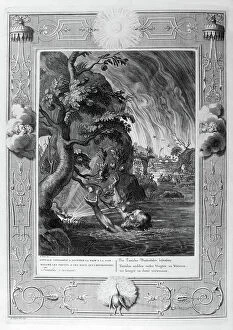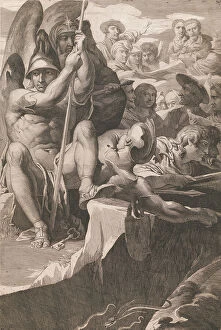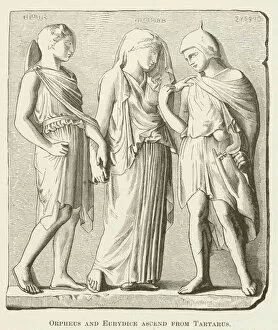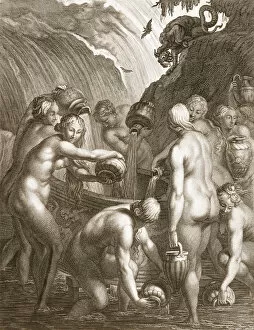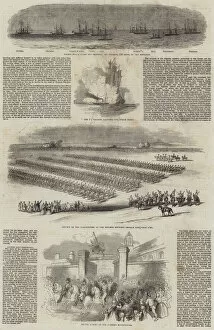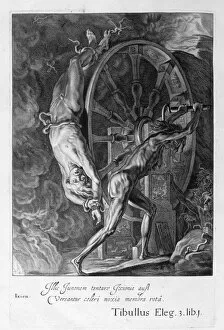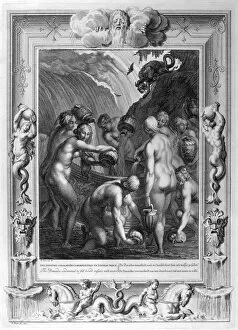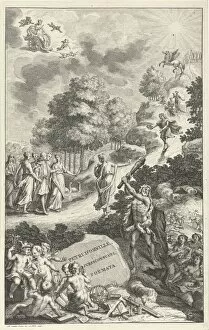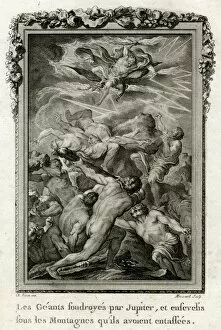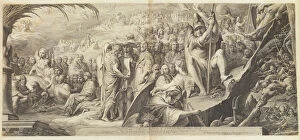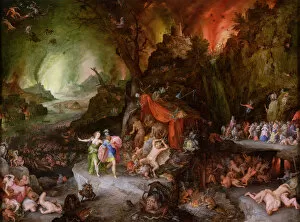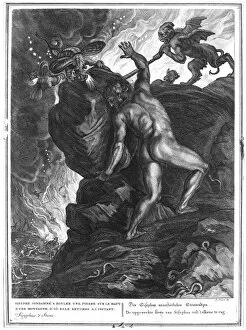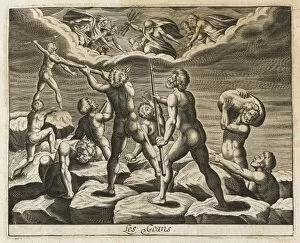Tartarus Collection
"Tartarus: A Realm of Eternal Torment and Mythical Punishment" In the depths of Greek mythology
For sale as Licensed Images
Choose your image, Select your licence and Download the media
"Tartarus: A Realm of Eternal Torment and Mythical Punishment" In the depths of Greek mythology, Tartarus stands as a formidable realm where the Titans met their ultimate defeat. This dark abyss served as a prison for those who dared to challenge the gods, perpetually enduring unimaginable suffering. One engraving depicts Orpheus and Eurydice ascending from Tartarus, symbolizing hope amidst despair. Their triumphant escape from this infernal pit serves as a reminder that even in the darkest moments, redemption is possible. Belial at the Gates of Hell, illustrated in a German translation of John Milton's "Paradise Lost, " portrays an ominous figure guarding the entrance to this dreaded underworld. Its haunting imagery reflects mankind's eternal struggle between good and evil. Sisyphus pushing his stone up a mountain captures another iconic scene within Tartarus' confines. Condemned by Zeus himself, Sisyphus endures an eternity of futile labor—a poignant metaphor for life's ceaseless challenges and our relentless pursuit for meaning. The Danaids condemned to fill bored vessels with water showcases yet another torment endured within Tartarus' depths. These fifty daughters of Danaus face an unending task—forever filling bottomless containers—an eternal punishment for their heinous crimes. Tantalus tormented by insatiable hunger and thirst epitomizes one's perpetual desire just out of reach. Forever taunted by tantalizing fruits dangling above him or water receding when he tries to drink—the essence of frustration encapsulated in one mythological figure. Odysseus' journey through Tartarus reveals encounters with fallen heroes and ancient legends long gone but not forgotten. His visit offers insight into this realm's vastness while emphasizing mortality's fleeting nature against its timeless backdrop. These engravings vividly depict scenes from hellish landscapes—scenes that captivate our imagination while reminding us that actions have consequences beyond death.

